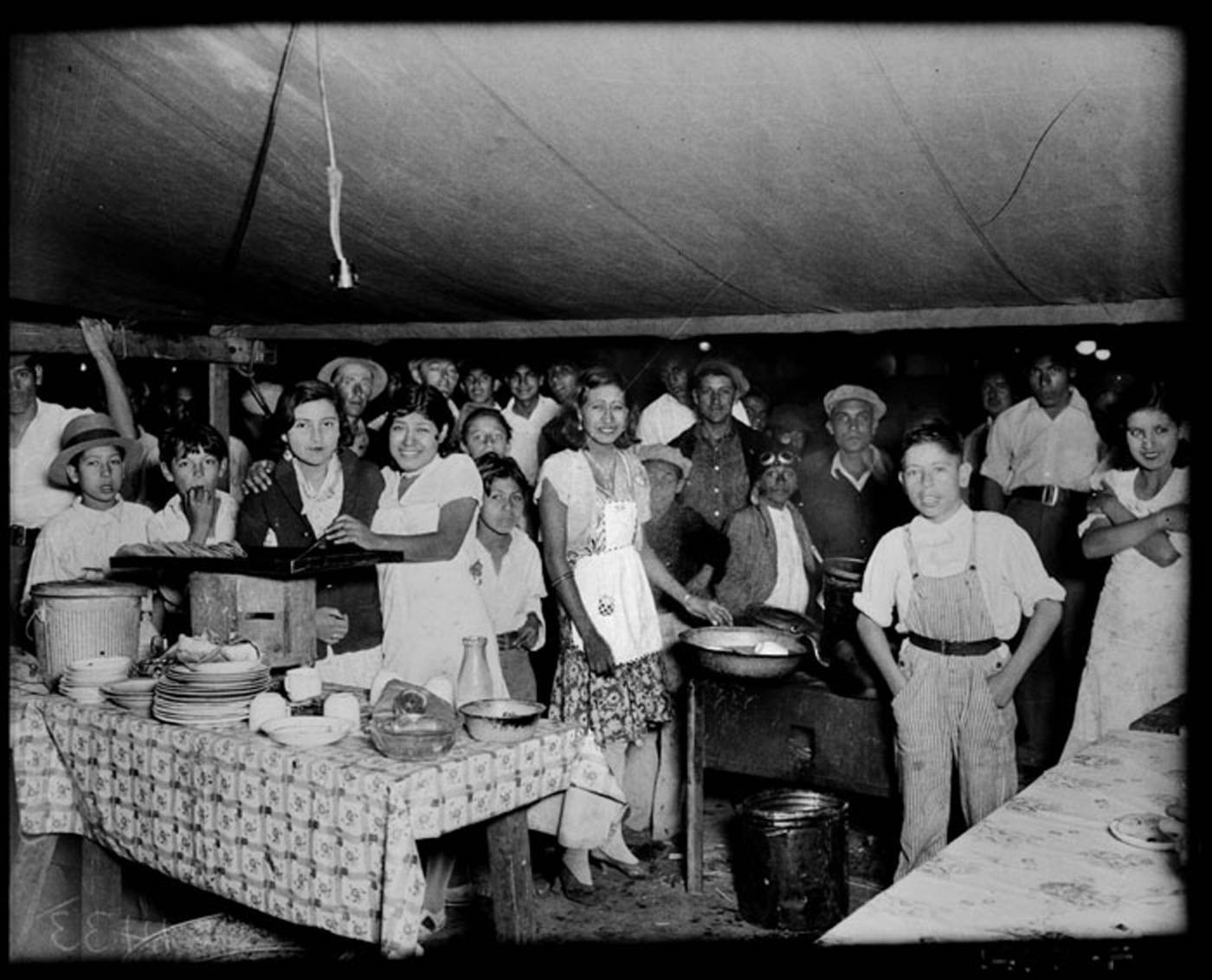
Developing Research Questions
Concepts
Remember the story of “Goldilocks and the Three Bears”? Goldilocks searched the bears’ house looking for the chair, porridge, and bed that was “Juuust right.” Well, think of Goldilocks when you are formulating your research topic: you want to create the perfect one, the one that is “Juuust right.”
1. Start with the General Topic
Let’s say that your professor has given you the general subject of food and says you need to write a paper that is 3 – 5 double-spaced pages. Well, “food” is a pretty big topic. If you were going to discuss everything about food, you would be writing a book, or nine. Think of all the history, cultures, diets, recipes, chemistry, etc. that are wrapped up in the idea of food. It is quite a lot!
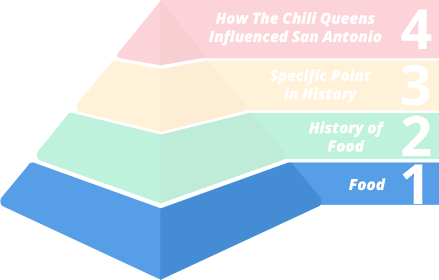
2. Narrow the Subject Down
So, we need to narrow this subject down. Let’s say that your major is in history. You might be tempted to say “history of food” and consider that topic a job well done. Before you pat yourself on the back, think about it: there are many aspects of food’s history to consider.
What will you discuss about the history of food?
The different cultural beliefs about beef?
The historic importance of rice in China?
The importance of food at a certain point in history?
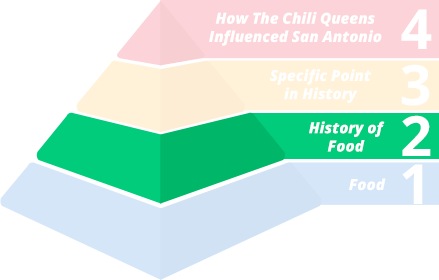
3. Then Narrow this Topic Down Even Further
You can narrow down your topic of the history of food even further. Let’s say that you decided to focus on the important foods at a certain point in history. This topic is certainly narrower than the giant topic of food, and narrower than history of food, but the topic is not narrow enough.
Here are some questions you could ask to help you narrow your topic down even further:
What specific point in history will you choose?
What geographic locale will the food be?
What is the food and the culture around that food?
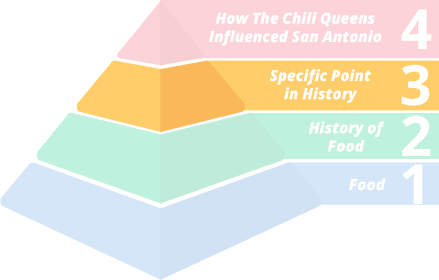
4. Now You Have Your Topic
After asking a series of questions to help narrow down the subject and doing some initial searching in Library Quick Search, we have decided on the topic:
“How the Chili Queens Influenced San Antonio”
Just like the pyramid to the right, we started off broad and ended to a point.
Use this process to narrow your own topic! At the final step, you can easily change your topic to a thesis, just like we successfully narrowed this topic from “Food” to “San Antonio’s Chili Queens spread the love of cowboy food and Texas hospitality to San Antonio visitors.”
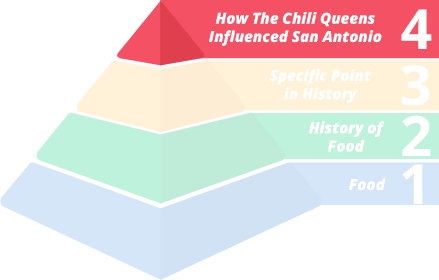
Activity
Now you know how to transform a broad idea to a specific one that can be discussed within a set page limit. Remember the pyramid: your topic should get narrower with each question that you ask. If the topic is getting bigger, there may be a problem.
Use this activity to narrow the topic of “sports” to a topic that can be discussed in a 2-3 page paper to make it “juuust right.”
Practice
Think you have the hang of this? Test yourself with the following practice questions. There are five questions. You might want to complete a Library Quick Search if you are unsure about how broad or narrow the topic is.
Resources
The more work that you do to get to a “Goldilocks research topic,” the better equipped you will be for your research journey. Remember, it took Goldilocks a couple of tries before she found the porridge that was “Juuust right” and it might take you a couple of tries before you find which topic will be just right for you too!
Want some more help? These tutorials provide some different approaches to getting your topic juuust right.
Reynolds Community College Libraries – Refine a Topic
University of Nevada, Las Vegas University Libraries – Topic Narrowing
Penn State University Libraries – Choosing a Topic
Virginia Tech University Libraries – Strategies for Narrowing a Topic